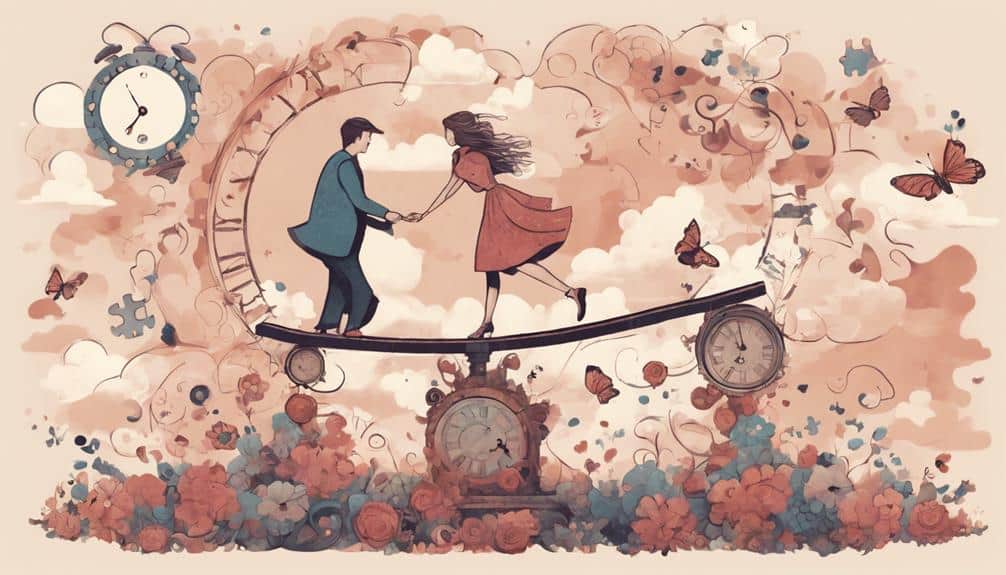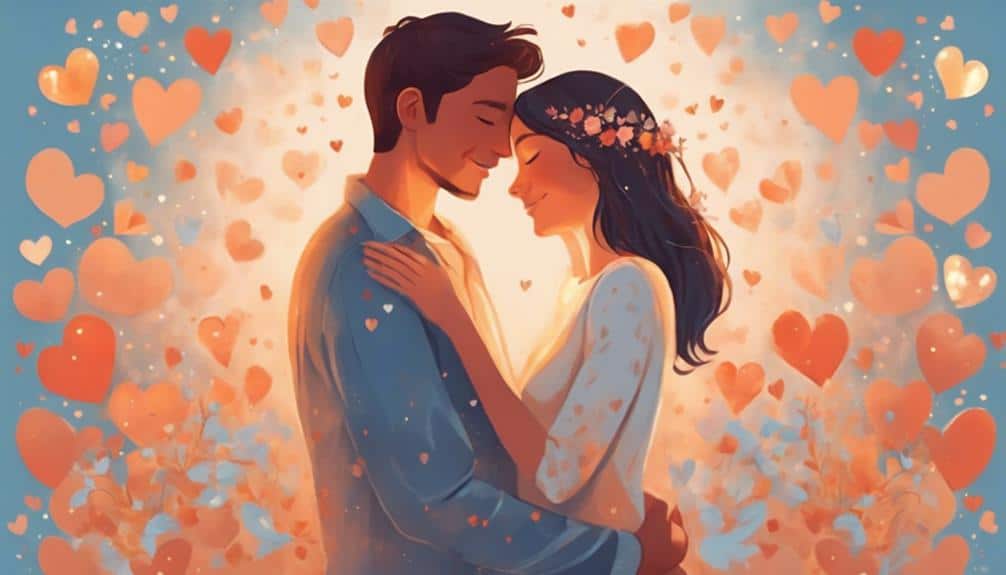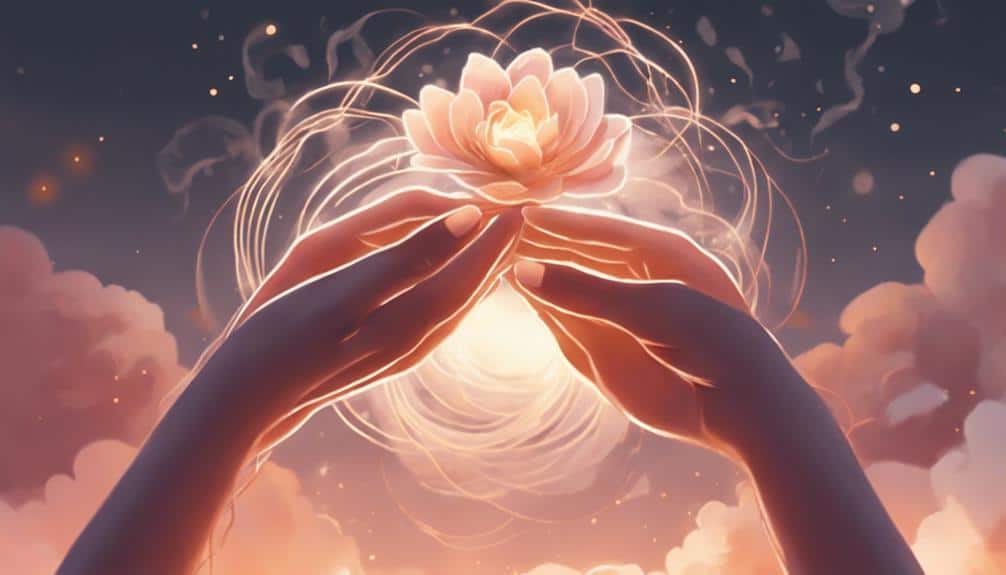You've likely experienced the euphoric high of the honeymoon phase, and now you're wondering how long this blissful state will last. On average, the honeymoon phase lasts around 12-18 months, but it can vary depending on factors like personal compatibility, emotional intelligence, and communication styles. As you navigate this exciting time, you'll want to know what signs indicate you're in the honeymoon phase and how to maintain that loving feeling. You're probably curious about what happens when the honeymoon phase ends, and how to build a lasting connection with your partner. As you explore these questions, you'll uncover the secrets to a fulfilling relationship.
Key Takeaways
• The average duration of the Honeymoon Phase typically lasts between 12-18 months, but can vary depending on individual circumstances.
• Factors influencing the duration of the Honeymoon Phase include personal compatibility, emotional intelligence, shared values, and communication styles.
• The Honeymoon Phase can last longer if couples prioritize emotional awareness, conflict resolution, and nurturing their connection.
• Couples can extend the Honeymoon Phase by revisiting memorable experiences, trying new things together, and fostering emotional intimacy.
• Transitioning from the Honeymoon Phase to a more stable phase is a natural progression, and building a lasting connection requires ongoing effort and commitment.
Defining the Honeymoon Phase
As you begin a new relationship, you're likely to experience an intense emotional high, marked by an overwhelming desire to be with your partner, constant flirting, and a deep emotional connection that leaves you feeling like you're walking on air. This is the honeymoon phase, a time when falling in love feels like a dream come true.
During this phase, you'll notice that you have more good days than bad, and even the smallest gestures from your partner can leave you feeling elated. The duration of this phase can vary, but it's a time when you're completely swept up in the thrill of new love. As you bask in the glow of infatuation, it's hard to imagine that things could ever go wrong.
But eventually, you'll start shifting out of this phase, and that's when reality sets in. You'll begin to notice imperfections in your partner, and conflicts will arise. It's a natural part of any relationship, but it can be jarring to leave the honeymoon phase behind.
Signs You're in the Honeymoon

You're likely in the honeymoon phase if you find yourself perpetually smitten, constantly thinking about your partner, and feeling an intense longing to be together. Everything about them seems perfect, and you can't help but feel like you're on cloud nine.
As you're getting to know each other, you're having a good time, and the physical and emotional connection is undeniable. You start to see the world through rose-tinted glasses, and even the smallest gestures from your partner make your heart skip a beat. The bad days are few and far between, and you're more focused on the good times you're sharing together.
Your desire for each other is palpable, and you can't imagine spending time apart. You're preoccupied with thoughts of your partner, and you feel an overwhelming urge to be together as much as possible. As you bask in the glory of newfound love, you're more likely to overlook flaws and imperfections, and that's okay.
For now, just enjoy the ride and savor every moment of this magical phase.
Average Duration of the Honeymoon

As you navigate the ups and downs of your relationship, you're probably wondering how long that romantic bliss will last.
The truth is, the honeymoon phase peaks early, and its duration varies greatly from couple to couple. On average, this intense romantic attraction lasts around 12-18 months, but remember that your relationship's unique dynamics will influence its length.
Romantic Bliss Peaks Early
Romantic bliss peaks early, and research suggests that the average duration of the honeymoon phase is surprisingly short-lived, lasting around 30 months before reality sets in and the initial infatuation wears off. You're likely to spend a lot of time thinking about your partner during this first stage of falling in love, and it's not uncommon to feel like you're on cloud nine.
| Honeymoon Phase Characteristics | Duration |
|---|---|
| High levels of desire | 30 months |
| Preoccupying thoughts about partner | 30 months |
| More good days than bad | 30 months |
| Increased mental health | 30 months |
| Reality sets in, infatuation wears off | 30 months |
As you navigate the honeymoon phase, it's essential to prioritize your mental health and be aware of the factors that can influence its duration. Couples with children or facing challenges may experience a shorter honeymoon phase, while others may enjoy a longer period of romantic bliss. Remember, the honeymoon phase lasts, but it's essential to focus on building a strong foundation for a healthy, long-term relationship.
Duration Varies by Couple
While 30 months may be the average duration of the honeymoon phase, your experience may differ considerably, and that's okay. You and your partner's journey is unique, and the time you spend in the honeymoon phase will be influenced by various factors.
The stress of everyday life, responsibilities, and life circumstances can all impact how long this romantic bliss lasts. For example, if you're starting a family or dealing with mental health conditions, your honeymoon phase might be shorter. On the other hand, if you're in a long-term relationship and have taken the time to know your partner deeply, your honeymoon phase might last longer.
It's essential to recognize that the duration of the honeymoon phase is unique to each relationship. As you start your time together, don't compare yourself to others; focus on nurturing your connection and building a strong foundation for a lifelong partnership. By doing so, you'll set yourself up for a fulfilling and loving relationship that will stand the test of time.
Average Lasts 12-18 Months
You'll likely find that the honeymoon phase of your relationship typically lasts between 12 to 18 months, a period marked by intense emotional highs and a deep sense of connection with your partner. This average duration is a common benchmark for many couples, but it's essential to remember that individual dynamics can greatly influence the length of this phase.
Factors like stress, responsibilities, and life changes can either shorten or prolong the honeymoon phase. For instance, couples with children or facing significant challenges may have a shorter honeymoon phase due to increased demands and stress. On the other hand, couples who prioritize communication, empathy, and mutual support may find that their honeymoon phase lasts longer.
Additionally, mental health conditions can also impact the duration of the honeymoon phase in relationships. Despite these variations, the 12-18 month average serves as a general guideline for understanding the typical trajectory of romantic relationships.
Factors Affecting the Honeymoon Phase

As you navigate the complexities of your relationship, you'll likely find that your personal compatibility levels and emotional intelligence roles play a significant role in shaping the honeymoon phase.
These factors can either strengthen or weaken your bond, depending on how well you and your partner complement each other.
Personal Compatibility Levels
Your personal compatibility level with your partner significantly influences the duration of the honeymoon phase, as it establishes a strong emotional connection, effective communication, and shared values that can make or break the relationship.
When you and your partner share similar values, communication styles, and emotional intelligence, you're more likely to experience a longer, more fulfilling honeymoon phase.
On the other hand, incompatible traits or unresolved issues can lead to a shorter, more tumultuous phase. It's important to recognize that personal compatibility is a vital factor in sustaining the honeymoon phase.
By understanding and addressing compatibility factors, you can create a stronger, more resilient relationship. By acknowledging and working through differences, you can foster a deeper emotional connection, paving the way for a longer, more satisfying honeymoon phase.
Emotional Intelligence Roles
One essential aspect of relationship dynamics that greatly influences the honeymoon phase is emotional intelligence, which plays a pivotal role in maneuvering conflicts, managing stress, and fostering a deeper connection with your partner.
As you navigate the ups and downs of your relationship, your emotional intelligence becomes a vital factor in determining the duration of the honeymoon phase. When you possess high emotional intelligence, you're better equipped to understand your emotions, empathize with your partner, and communicate effectively. This enables you to resolve conflicts more efficiently, reducing the stress that can shorten the honeymoon phase.
By being more emotionally aware, you can prolong the initial passion and connection, making your relationship more fulfilling. Remember, strong emotional intelligence is key to sustaining a longer-lasting honeymoon period.
Maintaining the Honeymoon Phase

To maintain the honeymoon phase, you must make a conscious effort to nurture the initial spark and connection that brought you and your partner together in the first place. This requires commitment and dedication to keeping the flame burning bright. By focusing on what initially attracted you to each other, you can reignite the passion and excitement that characterized the early days of your relationship.
Here are three key strategies to help you maintain the honeymoon phase:
- Try new activities together: Engage in novel experiences that bring you joy and excitement, allowing you to bond and create new memories together.
- Prioritize open communication: Share your feelings, desires, and needs with your partner, fostering a deeper understanding and connection.
- Focus on gratitude and appreciation: Cultivate a sense of gratitude for your partner's qualities, acknowledging and celebrating the unique qualities that make them special.
Recognizing the End of the Honeymoon

As you start to notice a decline in the intense emotions and butterflies that once characterized your relationship, you may be nearing the end of the honeymoon phase. This shift can be subtle, but it's crucial to recognize the signs to navigate the change smoothly.
| Signs of the End | What to Expect | What It Means |
|---|---|---|
| Decreased excitement | Less frequent romantic gestures | You're entering a more stable phase |
| Noticing flaws in your partner | Fewer idealized perceptions | You're seeing your partner more realistically |
| More frequent disagreements | Less infatuation, more constructive conflicts | You're building trust and commitment |
| Realizing individual differences | Facing challenges together, growing as individuals | You're moving towards a more mature relationship |
Know when the honeymoon phase is ending by identifying these signs. It's not a bad thing; it's a natural progression. After the honeymoon phase, a deeper connection awaits. Be prepared to face challenges and grow together, and remember, it's a normal part of the relationship journey.
Life After the Honeymoon Phase

You're entering a new chapter in your relationship, where the intense romance of the honeymoon phase gives way to a deeper, more mature connection. Life after the honeymoon phase can be a significant adjustment, as you begin to notice your partner's flaws, have more disagreements, and feel less infatuated. However, this phase presents an opportunity to build a stronger, more resilient bond.
Here are three essential aspects of life after the honeymoon phase:
- Building trust: As you navigate challenges together, you'll develop a deeper understanding of each other's strengths and weaknesses, fostering a more profound sense of trust.
- Personal growth: This phase allows for self-awareness, as you confront your own flaws and limitations, and work to overcome them.
- Deeper communication: You'll develop essential communication skills, learning to navigate conflicts and disagreements in a healthy, constructive way.
In this new chapter, you'll discover a more mature, deeper relationship, where you'll face challenges together, and emerge stronger on the other side.
Can the Honeymoon Phase Repeat?

While it's natural to wonder if the honeymoon phase can be relived, the good news is that it's entirely possible to recreate that magic in your relationship. You can experience the intense feelings of love and attraction again, but it requires effort and commitment from both partners.
| Action | Result | Emotion |
|---|---|---|
| Revisit memories | Reignite passion | Nostalgia |
| Try new things | Discover new excitement | Thrill |
| Prioritize connection | Strengthen bond | Intimacy |
| Embrace change | Grow together | Empowerment |
To revisit the honeymoon phase, you need to be open to change, growth, and maintaining excitement and passion in your relationship. Focus on nurturing your connection and exploring new experiences together. By doing so, you'll be able to recreate the magic of the honeymoon phase and strengthen your bond. Remember, it's not about reliving the past, but about creating new experiences that bring you and your partner closer together.
Building a Lasting Connection

By acknowledging that the honeymoon phase is a temporary state, you can begin to build a lasting connection with your partner that's rooted in mutual respect, trust, and open communication. As you move out of the honeymoon phase, you'll find that your relationship becomes more mature and realistic. This is an opportunity to build a strong foundation for your relationship, one that will stand the test of time.
To build a lasting connection, consider the following:
- Invest time in building emotional intimacy: Move beyond the surface-level excitement and explore each other's thoughts, desires, and fears.
- Foster open communication: Create a safe space for honest dialogue, active listening, and constructive feedback.
- Work together as a team: Collaborate on shared goals, support each other's aspirations, and celebrate each other's successes.
Frequently Asked Questions
How Long Can a Honeymoon Phase Last?
You're wondering how long the honeymoon phase can last? Well, it's a unique experience for every couple. Generally, it can last anywhere from 6 months to 2 years, but it really depends on you and your partner's communication, effort, and compatibility.
If you're facing stress or responsibilities, it might be shorter. And if you're dealing with mental health conditions, it can influence the length too.
How Do You Know When the Honeymoon Phase Is Over?
As the rose-tinted glasses fade, you'll know the honeymoon phase is over when the thrill of new love wears off, revealing the imperfections of your partner and your relationship.
You'll start noticing the little things that drive you crazy, and disagreements will arise. It's not a bad thing! This shift marks a new chapter, where you'll build trust, face challenges, and grow together.
Embrace this evolution, and you'll find a deeper, more meaningful connection.
Is 3 Months Still the Honeymoon Phase?
You're wondering if three months is still the honeymoon phase. Honestly, it's a great question!
At three months, you're still in the early stages of getting to know each other. The excitement and infatuation are still strong, and you're likely still in that romantic bubble.
How Long Does Falling in Love Last?
You've probably felt like you're walking on air a million times, but how long does that euphoric feeling of falling in love actually last?
The answer is, it varies. Typically, it can last anywhere from 6 months to 2 years, but it's unique to each couple. Factors like communication, effort, and life's ups and downs can influence its duration.
You might be wondering, what's the secret to making it last?



